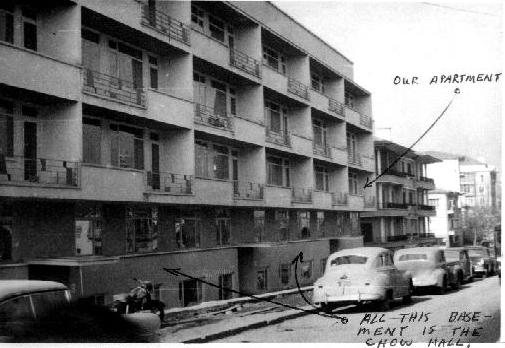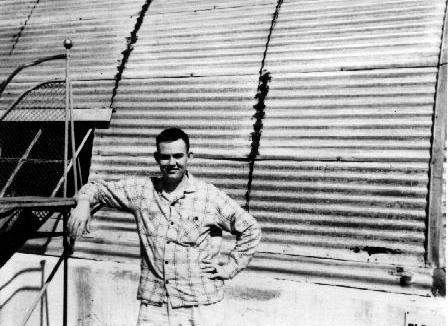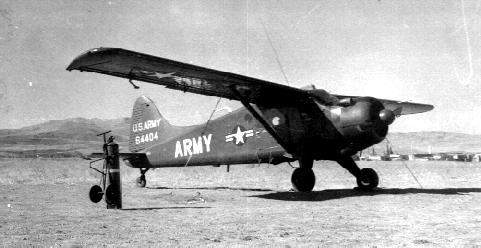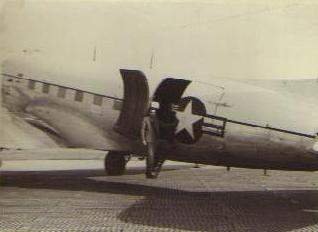|
|
Jimmy Carter
© 2003-2011 by Author
Sadly, Jimmy "Jimbo"  Carter passed away on the morning of February 26, 2000. Prior to that, he sent us this photo essay - a fine memory from this wonderful gentleman - which contains many photographs. Carter passed away on the morning of February 26, 2000. Prior to that, he sent us this photo essay - a fine memory from this wonderful gentleman - which contains many photographs.
"Hey, it helped kill time and only cost a couple of dollars" said Jimmie in reference to the Baglama - a Turkish stringed instrument he's holding in the photo, and he continued, "I Have a wooden flute that cost 25-cents. Better than both, I bought a chromed break-open .32 revolver (a crude copy of a "Smith & Wesson circa l880-1910" model), probably made in a mud hut in Pakistan. Also, I have a British .455 Webley break-open revolver, with the name R. J. Jones engraved down the grip's backstrap. Plus, an old blackpowder Belgian heavy-as-lead revolver, approximately .45 caliber.
I packed them all in my duffle bag, sent them off as hold baggage to my next duty station in Pennsylvania and they were right where I packed them when I claimed my bag months later. In civilian life after the Air Force, all these firearms were traded-off and are long-gone history."
Click any photo to view enlargement.
|
TUSLOG DET 30
AT THE END OF THE FIFTIES
 
Det 30 TUSLOG was in the center of Ankara,
railroad tracks on a high embankment directly behind. To the left
of HQ was the garage/vehicle dispatch area, called the "car barn".
The APO was directly behind. To the right, was the commisary/exchange-snack
bar.
|
 
The billets opened two weeks before I arrived in Ankara. It was two blocks east of the U. S. embassy, in the southern end of town. Shown is an exterior view, plus an interior view of our bay. The bottom floor was the chow hall, with three floors of billets bays above. Directly behind was a similar building, back to back, which housed Army, Navy, and in-transit servicemen. Headquarters TUSLOG was one block up the street, and one block over from HQ (uphill) was the hospital, which I think was Det. 37. Behind the U.S. embassy was Finance. The NCO Club was also west, between the billets and downtown. Shuttle buses ran hourly between all of the scattered facilities, or, you could hail a "taksi."
|
 
The USAF side of Esenboga International Airport consisted of three Quonset huts and one sheet-metal Butler freight building (which also contained the parachute section, aircraft maintenance, forklifts, etc.). Originally, the first hut had Air Freight/Passenger in the front, base ops in the center, and the wireless radio room in the rear. The middle hut had the flightline snack bar, run by Mom Hess with an iron fist. We often asked her if Adolph Hitler was her brother ?! It only operated Monday thru Friday. I'd rap on the counter during lunch break, yelling "vodka...vodka !!". Mom Hess would
reply: "Nein, nein...kindermilch !!" Kid's milk, indeed...... The third hut had the transit alert/follow-me office in front, aircraft parts in the center, and a shower/ready room with lockers in the rear, where pilots and aircrewmen stashed their flight gear. When things got kinda hairy during the Beruit thing, we smuggled in and hid ten cases containing ten M1 Carbines each, plus crates of .30 Carbine ammo, in the center "parts" section of the third hut, covering them with canvas and greasy parts. Only the flightline crew knew of their existance, and, we were told if Russia intervened and warfare broke out, we were to join up with the Turk garrison just outside the rear road entry into Esenboga. It never came to that, or anything like it. Whew!!
|
 
Two interior shots of base ops when it was located in the
middle of the first hut. Maps were joined together. Using Ankara
as the center, a weighted string was used to trace the flight routes
between cities, then stretched out on a milage scale to determine total
air miles. Between the ops counter and this map-covered wall was
a large table, with pigeon holes containing maps underneath. Here
the pilots worked up their DD-175 Flight Plans. We had a phone over
to the terminal side, such as the tower, weather, customs, etc. The
wireless radio room handled traffic in and out of Turkey per Athens Flight
Service Center. We always kept the spare radio set tuned to Radio
Moscow's English language channel, hearing the latest American pop music
six months before the records showed up at the PX to purchase ! They
also, of course, reported the U-2 flights from Turkey. Plus the never-ending
"five year plans" re cotton production, ad finim. Occasionally, they'd
throw in a "have a great trip home" message concerning some serviceman
about to return home from Turkey, giving name and new duty station assignment.!!
At first this was quite startling, but Russia was number one in the spy
business in Turkey and we learned to accept this as a fact of life.
|
 
General photos of buildings and statues in downtown
area of Ankara, mostly taken out the window of a moving USAF shuttle
bus, as it made its rounds from facility to facility. Most building
had "malls" on the first floor, containing everthing one needed, from rugs,
jewelry, photo-developing, clothing, to travel tickets. The next
two levels had offices for rent. The top floors were apartments for
rent.
|
 
Building after building used this same basic format.
Also, some mall-stalls had windows and seperate entrances directly off
the sidewalks, which I'm sure commanded a premium rental fee. One
thing we learned fast was: WEAR CIVILIAN CLOTHES !! The streets
were full of Turk askeris, who saluted anything with two or more stripes
plus officers, of course. If in Class-A USAF uniforms, not
only would we have to salute hundreds of Turk officers, but return a thousand
salute from the common Turk askeris!! No thanks!!
In addition, the police who directed traffic were assisted by Turk Army
M.P.'s, wearing white helmets with a broad red stripe, arm bands, white
gloves, and white web-belts. Evidently the Turkish Military believed
in getting their full usage out of their enlisted personnel.
We called upon the Turk garrison just outside our entrance into Esenboga
to guard over-night airplanes containing classified material, and they
did their duty in gawd-awful weather, especially in the winter time.
Tough bunch, those askeris ......
|
 
|
|
An "Ol' Shakey" unloading mail at Esenboga. PanAm
mail-hauler strike in Italy forced the USAF into the mail-hauling
business. Special MATS project bringing in all-weather radardome
sections for Sinop, Samsun, and Trabson sites saw both C-124s and C-130s
coming into Esenboga. C-119s and TAF C-47s shuttled the loads north
to the Black Sea radar sites. Got so far behind at one point, we had to
contract with Turk trucking firms to haul some of the stuff, traveling
together over the rough gravel/dirt roads "convoy style." The C-124
was a marvel to behold upon landing: Touch-down, reverse the props,
put on engine power, slow down and turn in at the runway's mid-point.
We witnessed this hundreds of times, a giant plane stopping in such a short
distance !!
|
 
|
|
Left photo, looking to the right: Turks had the
street torn up for two months, installing a water line and new sidewalks.
We had to walk the slippery board across a ditch, then down the cement
steps to ground level, either to the first floor chow hall, or, to either
side to ascend to the billets areas above.
Right photo: looking to the left, at apartment
buildings across the street. You would not believe the curtains-open
"entertainment" a girl by the name of "Crazy Mary" put on occasionally
for all our benefits.....was hard to find a place out on the balcony for
the freebie show. And, I do mean SHOW !!
|

One of two Army L-20s, used for ferrying mail and personnel
to and from the radar site at Sinop, on the Black Sea Coast. The
Army L-20s had dual controls, while our USAF models had a swing-over wheel,
mounted on a center upright column. In other words, either the Air
Force pilot sitting on the left had the steering wheel on his side OR the
right front seat passenger had the steering wheel over on his side !!!
Also, in either model, Army or Air Force, one wore a backpack parachute,
which fitted into the hollow, shaped metal shell that formed the seat's
back rest. Lt. Murray was a history freak and we flew up north
and then east to overfly Hittite ruins on several occasions. The
second time we flew everything went smoothly until we were returning home,
about 20 minutes out from Esenboga. Overcast skies all of a sudden,
staying at 9,000 feet so as not to hit any mountains. Lt. Murray
went over the bale-out routine: Pull the door release at the front
door hinge, shearing the copper safety wires, open the door and shove it
away from the airplane, unfasten the shoulder straps and seat belt.....AND,
"If I say go, don't look over here and ask "what did you say?" because
you will be talking to YOURSELF.!!! Just as suddenly, the good
Lt. Murray stood the L-20 on its left wing, over we went through a tiny
opening in the clouds and ----holy Moses---in all its glory was Esenboga
awaiting our final approach. Never did a concrete runway look so
damned pretty !! We mutually agreed to keep mum about our "maybe"
over-the-side close call. Lt. Murray started his career as an enlisted
man, asked for and got a shot at becoming an Officer and pilot, and was
an easy-going down-to-earth fine human being . He was my all-time
favorite pilot, bar none.
|

AFEX Receipt
|

Orders dated 26 May 58, confirming flight to Athens
on May llth. (Just a plain-jane R &R flight to enjoy the sights, the beer, the women.)
|
 
Capt. Harlan sacked out under the C-47's wing, enjoyed the
shade, some Greek orange juice....the rest of us hailed a cab and hit several
beer joints and hit-on the local female bar-floozies. I still have
a Greek beer bottle lable somewhere in my stuff that I peeled off.
Poor Capt. Harlan, happily married, so no broads. He was "driving"
the C-47, so no beer or booze. Great guy, was born in North Carolina,
same as myself. We talked about the good ol' picking cotton under
a blazing sky growing-up days of our youth on more than one occasion, agreeing
that Air Force life was veryyyy much better!
|

MATS napkin, showing the air routes/miles of the MATS ATLANTIC
DIVISION. These were passed out with the meals served
aboard the C-121 "Connies" carrying military personnel and their dependents.
I just happened to save one. Good show, eh ?!
|

Mats boarding passes
|

Our C-54. Primarily flown by upper-crust Lt. Col.'s and above,
a definite "my toy is bigger than your toy" mentality!! One
Capt. Pangello, in charge of the intown "car barn" garage/vehicle dispatch
section, made the boo-boo of calling this C-54 HIS plane. He shortly
thereafter received orders for Thule, Greenland. His ass-kissing
NCO spent the rest of his tour in a tiny unheated shack out at Esenboga's
salvage yard !! Oh, gawd... how the flightline crew loved the justice
of it all !!!! The C-54 and our one C-47 No. 49700 both
featured the "bandit" raccoon dark blue band around the cockpit windows,
extending back along the side for some distance. Within a large circle,
each side, was the TUSLOG "Flying Horse" emblem. Quite sharp and
damn fine artwork by someone unknown. Sadly, ol' 49700 was released
from Det. 30 and flown to Tripoli, Libya. There, long-range rubber
fuel tanks were to be placed in the cargo section and she was destined
for the U.S., for parts-salvage and the smelting works. When I left
Turkey, 49700 was sitting at Tripoli awaiting her fate. I received
permission to vist her one last time. I stood there and cried like
a baby, and I'm not ashamed to admit it. Alas, fifteen years of hard
usage had caught up to her. A cracked wing spar, etc., shortened
her Air Force career. Such is the way of life on earth, animal or
material. Truely, still a sad memory for me to this day.
|
|
Orders sending me to Turkey
|
Return to Website Home Page
| |
